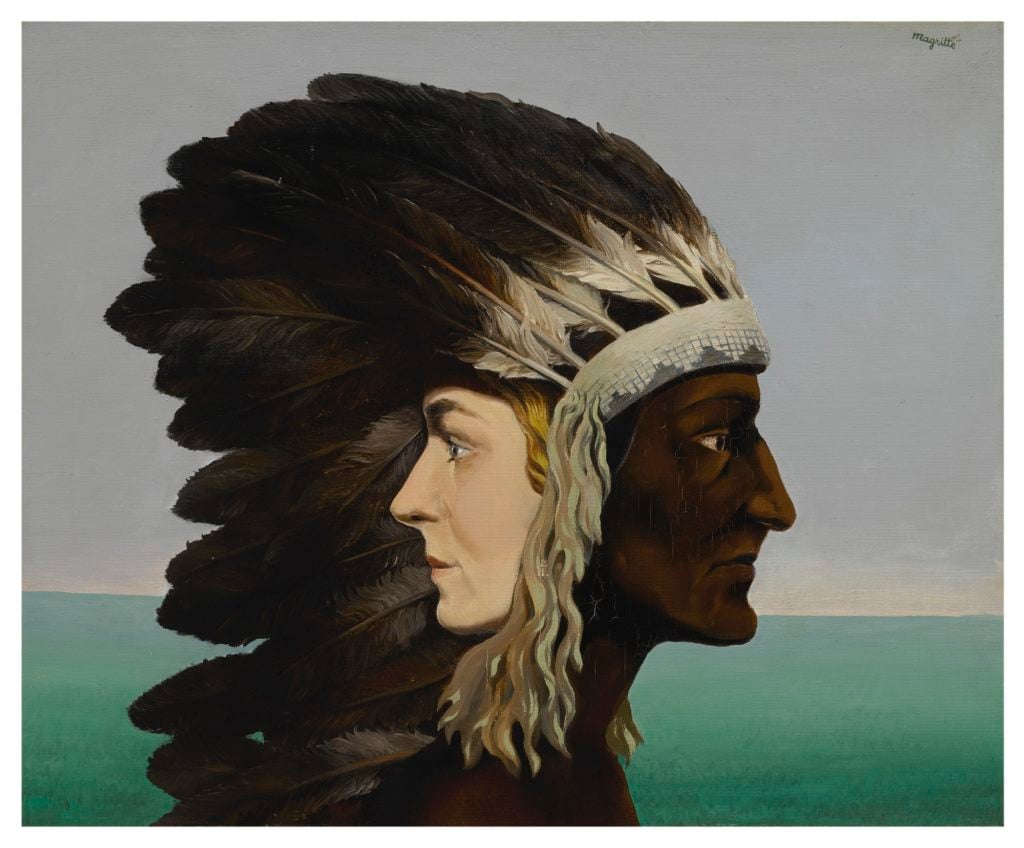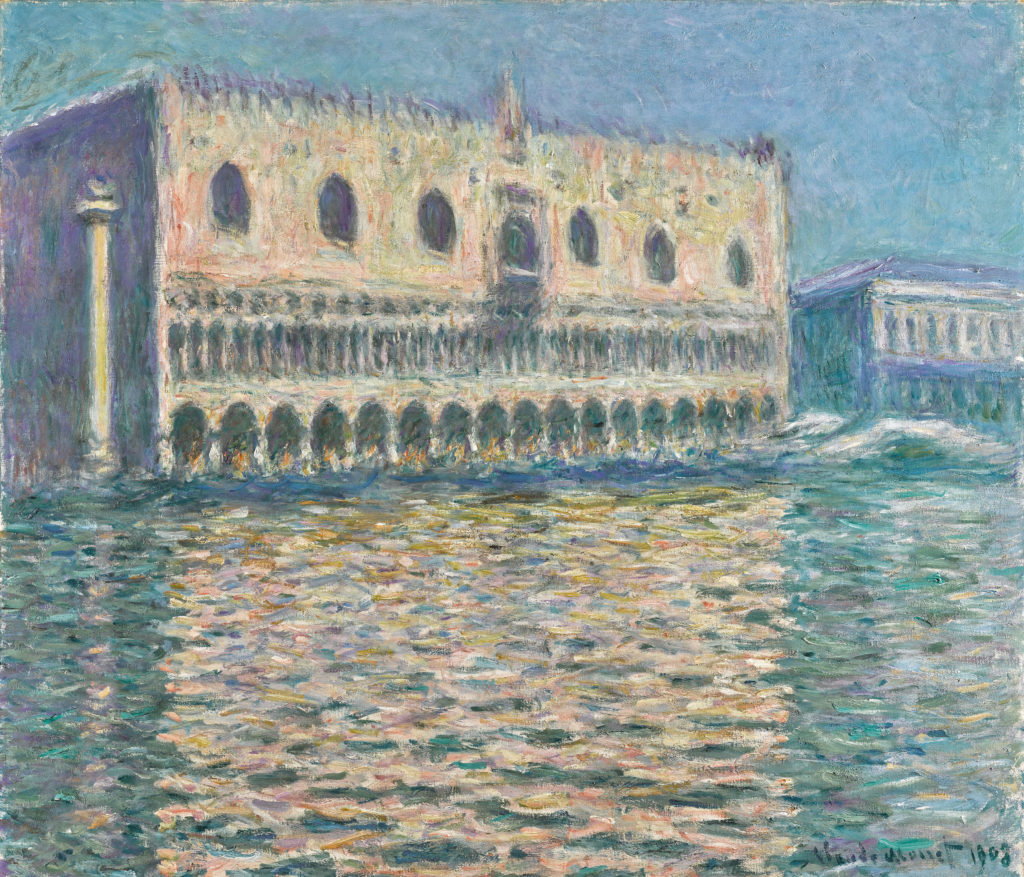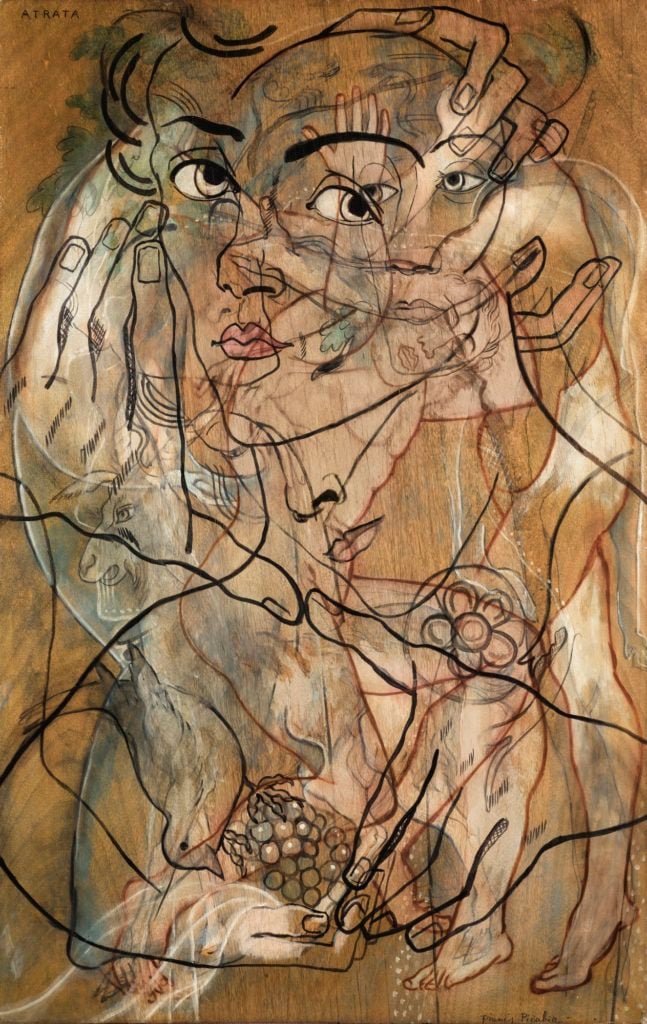Market
Surreal Paintings and Staid Sales Kicked Off London’s Impressionist and Modern Art Week at Sotheby’s $115 Million Auction
Monet's ethereal painting of Le Palais Ducal led the sale at $36 million.

Monet's ethereal painting of Le Palais Ducal led the sale at $36 million.

Colin Gleadell

The pre-sale estimate for tonight’s Impressionist, Modern, and Surrealist art sale at Sotheby’s London—£62.1 million to £89.3 million—was the house’s lowest in the category since 2009. In his most recent conference call with investors, Sotheby’s CEO Tad Smith said he thought 2019 would be tough, and maybe he was right, at least when it comes to winning consignments.
In the end, 37 of the 44 lots sold for £87.7 million ($115.3 million), down from last year’s £136 million ($180 million), but a healthy result given the unstable economic and political climate. The total was boosted fractionally by the new increased buyer’s premium rates which have risen by between 1 percent and 5 percent, depending which price strata the purchase falls in. Similar, but lesser increases will also now be applied at Christie’s and Phillips. (Sold prices include buyers’ premium, estimates do not.)
Nonetheless, the bidding was lively, especially from Asia—namely China, Taiwan, and Japan—which had been one of the imponderables going into the sale. Seven guaranteed lots made up 58 percent of the pre-sale value of the sale and included the three highest estimated lots.

Claude Monet, Le Palais Ducal (1908). Courtesy of Sotheby’s.
Coming in at the top was a late Venetian view of Le Palais Ducal (1908) by Monet, guaranteed with a £25-35 million estimate. Half of Monet’s Venetian views are in museum collections, and though not quite as breathtaking as many of those, this still made the highest price for a Venetian painting yet at £27.5 million ($36.2 million), underbid on a phone manned by Sotheby’s managing director of Japan, Aki Ishizaka.
There was further Japanese bidding and buying for works by Alberto Giacometti when Ishizaka outbid New York’s Acquavella Gallery for a painting of the artist’s wife, Annette, going estimate for £3.2 million ($4.3 million). Meanwhile, Camille Pissarro’s romantic painting of a young girl in a flower garden was contested by a bidder from Japan before selling to someone in Taiwan for £1.7 million. Japanese buyers also snapped up works by Chagall and Kandinsky.
Elsewhere from Chinese-speaking Asia, a bidder was outgunned for a not altogether characteristic square canvas of a boat by Egon Schiele that made the second highest price of the sale, above estimate at £10.7 million ($14.2 million).

Wassily Kandinsky, Vertiefte Regung (Deepened Impulse). Courtesy of Sotheby’s.
The third top lot, though, was something of a disappointment. A 1928 abstract by Wassily Kandinsky had been acquired in November 2015 by the Nahmad family of art dealers for $6.4 million. Now back with a £5.5-7.5 million estimate ($6.9-9.5 million) it had a guarantee from a third party. And it needed it, selling to a lone bidder—probably the guarantor—for £6.1 million ($8.1 million).
The Kandinsky was one of a small group of pictures that Sotheby’s assembled to pick up on the global attention generated by the centenary of the birth of the Bauhaus. The star of this section was undoubtedly a rare and great example of Oskar Schlemmer’s work in this period. The spare interior, Group at a Table (1923) was estimated at £1-1.5 million ($1.3-2 million), close to a record for the artist, and attracted a late third-party guarantee. A shrewd move that, as the painting attracted strong bidding from Levy Gorvy gallery before selling to one of two Russian phone bidders for a new record: £2.6 million ($3.4 million). If they weren’t the buyer, the guarantor will pocket a few hundred grand as part of the upside.
Another Nahmad picture included an early Pablo Picasso still life of flowers which the family had bought back in 1988 for £880,000. They tried to sell it in November 2011 with a $3.5 million estimate, but it went unsold. Now, estimated at a reduced £1.6 million to £2.4 million ($2-3 million) it was one of three lots withdrawn from the sale, presumably due to lack of pre-sale interest.
Coming from the Museum of Modern Art in New York’s collection was an early fauvist painting of a reclining woman in 1906 by the German Expressionist Ernst Ludwig Kirchner. Uncharacteristic, perhaps, but historically interesting, it sold to a Citibank art advisor for a top estimate £3.8 million ($5 million).

Francis Picabia, Atrata (ca. 1929). Courtesy of Sotheby’s.
In the surrealist section of the sale, Magritte may have been the dominant figure with a Janus-like composition of a Native American and his wife, Georgette, which sold on the high estimate to a US collector for £5.3 million ($7 million). But the star of the night was Francis Picabia’s Atrata (1929), a zany painting from the artist’s transparencies series which he made in the 1920s and ’30s, so named because of the transparent layers in which he executed the paintings that predominantly feature attractive women with beseeching eyes.
The painting had been with the same family since it was bought in Paris in 1974 for 108,000 Francs (£10,800) and attracted seven bidders, many from Asia, before selling to Sotheby’s Ollie Barker of the contemporary art department for a double estimate £3.7 million ($4.9 million). It was also a record for a Picabia transparency painting.
“Given the current political and economic uncertainty, the sale did extraordinarily well, due in part I think to the power of international collectors buying in dollars,” said Sotheby’s former co-chairman Melanie Clore, now of Clore Wyndham Fine Art. “In particular those from Asia and the US seemed very active.” And, in relation to the low value of the pound sterling, “some of the pre-sale estimates were enticing for those buyers in key international markets.”